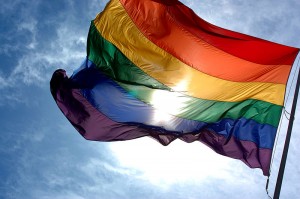 In 1978, when San Francisco artist Gilbert Baker created the Rainbow Flag, he must have known that there were already a number of “rainbow flag” incarnations in existence. Worldwide movements for peace in the previous decade made the rainbow flag the most recognizable symbol for hope and peace around the world. It had been adopted by religious and non-governmental organizations since the turn of the 20th century everywhere. In Christian theology, the rainbow is the symbol of God’s promise to humanity after the Great Flood to never destroy the world again.
In 1978, when San Francisco artist Gilbert Baker created the Rainbow Flag, he must have known that there were already a number of “rainbow flag” incarnations in existence. Worldwide movements for peace in the previous decade made the rainbow flag the most recognizable symbol for hope and peace around the world. It had been adopted by religious and non-governmental organizations since the turn of the 20th century everywhere. In Christian theology, the rainbow is the symbol of God’s promise to humanity after the Great Flood to never destroy the world again.
But since 1978, it became a not-very-hidden code about what and who would be gay-friendly. Restaurants and bars that had huge rainbow flags were definitely safe havens – bars with more subtle gay flags were, themselves, likely as closeted as much of their clientele. Throughout the nation, people adorned their cars with rainbow stickers, and the long rainbow strips that adhere neatly to the bottom of the rear window announced, perhaps more subtly, “Yes, I’m gay and this is my car.” In gayborhoods everywhere, rainbow windsocks and banners loudly proclaim to people who may wander in, that this is a neighborhood where love and harmony reigned supreme, and anything like homophobia or intolerance will not be tolerated. Unfortunately, this philosophy was held so close to the community, that no one else really knew that it meant anything other than “Rainbow = Gay” and in a world where gay was frequently still akin to perversion and the worst of humanity, the Rainbow flag had enemies as outspoken as its supporters.
I used to be a Boy Scout. It’s true – in the days before “Don’t Ask, Don’t Tell” ever entered the vernacular, and before the realization of how 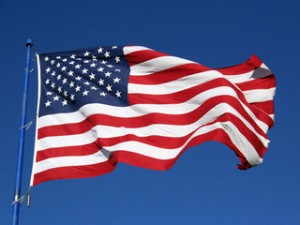 homophobic the Boy Scouts actually were, I was a Scout. From 3rd Grade Cub Scout until I achieved the rank of Scout First Class in my mid-teens (which seemed to coincide roughly with the age when I realized how much I was a boy who liked other boys). As part of the experience of being a Boy Scout (and a midwesterner, and someone born into a military family…) I was fed a steady diet of patriotism, and a seemingly endless education about what it meant to be an American.
homophobic the Boy Scouts actually were, I was a Scout. From 3rd Grade Cub Scout until I achieved the rank of Scout First Class in my mid-teens (which seemed to coincide roughly with the age when I realized how much I was a boy who liked other boys). As part of the experience of being a Boy Scout (and a midwesterner, and someone born into a military family…) I was fed a steady diet of patriotism, and a seemingly endless education about what it meant to be an American.
We studied the assorted patriotic songs – COLUMBIA GEM OF THE OCEAN, AMERICA THE BEAUTIFUL, and MY COUNTRY TIS OF THEE – a blatant rip off of the British National Anthem, GOD SAVE THE QUEEN (or King, as the case may be) – we, without irony, even sung the British standards LAND OF HOPE AND GLORY and RULE BRITANNIA in addition to our own national anthem, the STAR SPANGLED BANNER – a song that seemed to blackmail me emotionally every time it was sung. Everyone else would seem to swell with pride, singing a song about going to war with Britain for independence and the resilience of a flag that remained in flight, in spite of the furious and fiery battle that waged on, because it was the Will of God that our nation’s revolution be victorious over the horrors of British rule.
By the time I was 10, I knew that there was something inherently odd about pledging myself and my everlasting Allegiance to a cloth symbol of my nation.
From Kindergarten on, the daily repetition of a Pledge of Allegiance that I didn’t really understand (which incidentally was penned by a Socialist, just sayin’), was a pledge not only to a nation, but a pledge to a flag. By the time I was 10, I knew that there was something inherently odd about pledging myself and my everlasting Allegiance to a cloth symbol of my nation. As I grew older, and progressively less enchanted with my country, and grew progressively more aware that I was a citizen of a nation that did not fully recognize my entire person – simply because I was not of the heterosexual variety – I began to care less and less about Old Glory. While I certainly have respect for the revolutionary ideals of those who fought the British near the end of the 18th Century, I can’t bring myself to lionize them, and to give power and religious relic status to a piece of fabric – after all, wasn’t the point of revolution to liberate ourselves from undue fealty to the symbols of a Crown that expected our allegiance and tax money without doing anything in exchange to earn it?
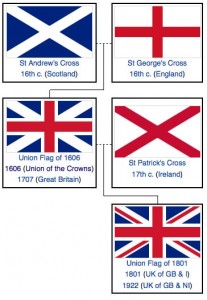 In high school, a World History class tested us on our ability to recognize the flags of the world. The test included labeling pictures of the flags every nation recognized by the UN at the time. While I can’t recall my score for certain, I do remember scoring well – and surprising my teacher by distinguishing between the numerous 3-color-bar flags of most of Europe – all fairly similar in their design and color scheme. It was around then that I realized that, by comparison, Old Glory was awfully garish – asymmetrical in design, too busy with the 13 stripes to represent the original colonies, and the less said about the dark blue field of white stars, the better. When the United Kingdom decided to unite under one banner, they simply layered Scotland’s flag with St. Andrew’s Cross, and England’s flag of St. George’s Cross, then later added St. Patrick’s cross when Ireland was dragged in – I guess Wales didn’t get a voice. When the US was created, we had to start from scratch – until the American Revolution, the US didn’t have a codified flag. Hell, we weren’t yet even called the United States, yet.
In high school, a World History class tested us on our ability to recognize the flags of the world. The test included labeling pictures of the flags every nation recognized by the UN at the time. While I can’t recall my score for certain, I do remember scoring well – and surprising my teacher by distinguishing between the numerous 3-color-bar flags of most of Europe – all fairly similar in their design and color scheme. It was around then that I realized that, by comparison, Old Glory was awfully garish – asymmetrical in design, too busy with the 13 stripes to represent the original colonies, and the less said about the dark blue field of white stars, the better. When the United Kingdom decided to unite under one banner, they simply layered Scotland’s flag with St. Andrew’s Cross, and England’s flag of St. George’s Cross, then later added St. Patrick’s cross when Ireland was dragged in – I guess Wales didn’t get a voice. When the US was created, we had to start from scratch – until the American Revolution, the US didn’t have a codified flag. Hell, we weren’t yet even called the United States, yet.
Through my near obsession with these symbols people chose for themselves, and what they were meant to represent – I learned that much could be determined about a nation based on the symbols it adopted. The Union Jack in the UK was about as literal as they came – three kingdoms merged, their three ancient banners merged. In France, le drapeau tricolore, is one of those simple European sorts – equal bands of Blue, White and Red, neatly echoing the motto of Liberty, Equality and Fraternity. But the flags of Swaziland and Sri Lanka tell a more elaborate story of their history – symbols of old kingdoms, the interruption of colonization, and then their eventual independence and struggles to be a nation now.
Last week, the company that owns the Space Needle (no, it’s not publicly owned…) announced that they would not be flying the Rainbow Flag in celebration of LGBTQ Pride Month, as they did last in 2010. Instead, they would be donating the massive Rainbow flag to Seattle Out and Proud to use in the parade, or in any manner deemed appropriate. But it would not be flying atop the city’s most/only iconic symbol. The Space Needle stated that it was not their policy to fly any flag with any regularity. Across the Puget Sound region there was a collective gay gasp – accusations of homophobia flew from mouths of the community who made (probably not altogether unfair) associations about the “12th Man” flag that seems to fly with impunity, and the absence of the Rainbow Flag this year.
There was much applause and patting of backs last year when the Needle flew the Pride flag. Everyone celebrated “just how far we’d come as a community” because a symbol that Seattle treats as its icon and signature, that is wholly owned by a family business decided to fly the rainbow flag, and through that gesture tacitly say to the community, “We like the gays.”
Not too long ago, I wrote THIS ARTICLE about marketing to the LGBTQ community, and asked that everyone keep a vigilant eye toward those
who would market to gay people simply to make a buck off of the pride you have in your community. When this story about the Space Needle and the Rainbow Flag emerged, I looked at that article again, and made a connection that many, many other people had made – the Space Needle had pandered to our community… though not necessarily entirely devoid of sincerity. As far as I know they aren’t making money off of the LGBTQ Community then turning around and spending it on anti-gay political measures (but keep an eye out on Rob McKenna’s campaign – just sayin’…), nor have they said “We no longer support equality for all, including the LGBTQ community.” They simply exercised their right, as a privately owned company, to do whatever the hell they wanted without concern or conscience for the city that they inhabit.
To say that as a community, our feelings are hurt because someone didn’t want to fly the rainbow flag is overly simplistic, and inaccurate. While the LGBTQ community may append enormous value, and symbolic importance to the Rainbow Flag, even thirty-plus years later, it doesn’t have the ubiquity that Old Glory enjoys – there’s no common, overarching understanding of what the flag means – because as a community, we have a diverse relationship with the Rainbow Flag – because we are a diverse community. For some, it’s the very heart of the pride in our community – for others, it’s yet another article of history that has been cheapened by the windsock and tchotchke industry who crank out Rainbow-clad merchandise at Indonesian factories for a fraction of the final selling price. At worst, the Space Needle can be accused of cultural insensitivity – simply not knowing that by flying the flag one year, then not flying it the next could be perceived as a slap in the face. But to accuse them of anything more sinister, is absurd and reactionary.
But this isn’t a lesson in history, nor is it a lecture in vexillology. At the end of the day, our flags are only symbols of our histories, ideals and hopes. To wrap ourselves in a symbol so transitory and provincial is to continue to keep ourselves apart from the world at large. The truth is, for me, that no single flag – Old Glory, Union Jack, Rainbow Flag – flying anywhere has ever made me swell with pride. It’s only in groupings where I see collections of flags, and thus a collection of ideals and beliefs together that I am moved to feel anything – and then I feel the feeling that has eluded the LGBTQ community for decades: respect.


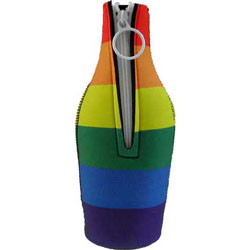
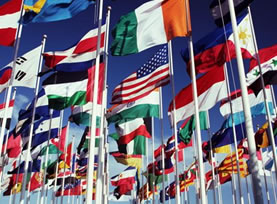
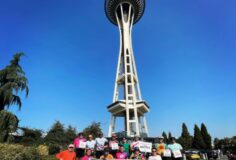
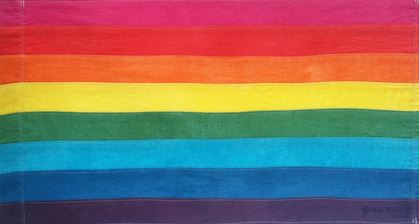
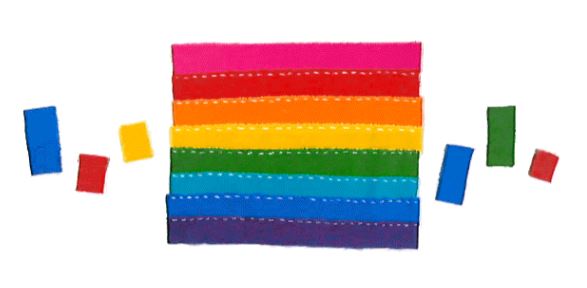
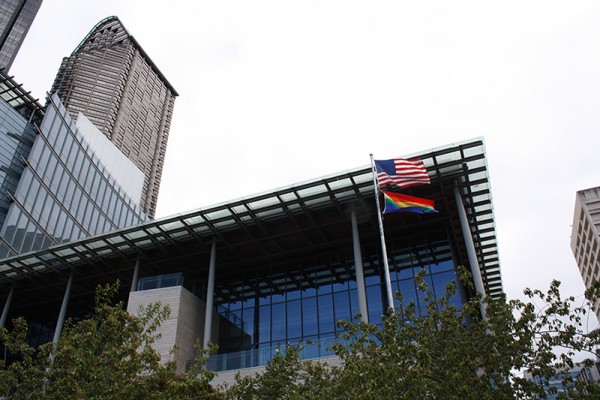
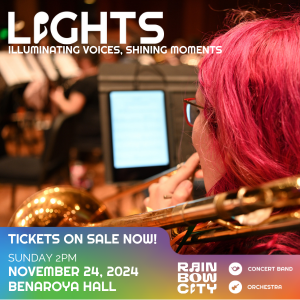


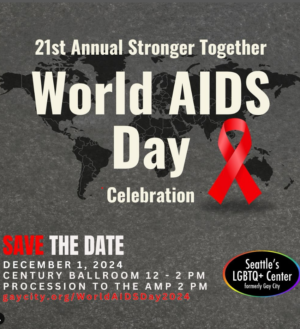
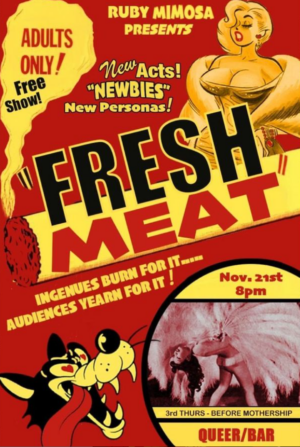


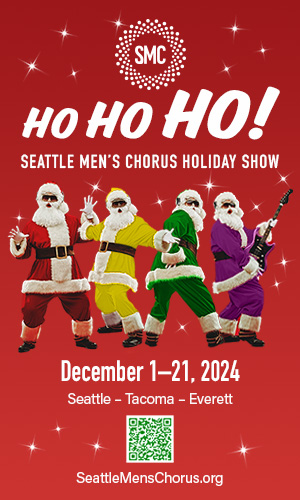
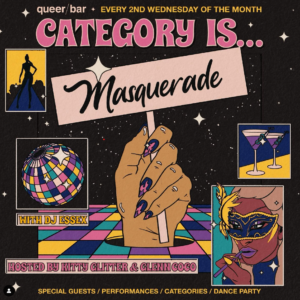

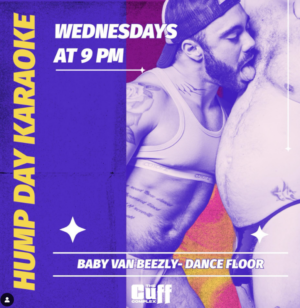
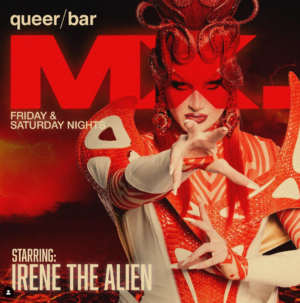
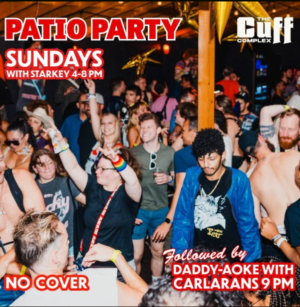
Great article. We tend to get riled up over anything that smacks of homophobia, heterosexism, or intolerance. Thanks for offering some information as balance.
BTW, the rainbow isn’t G’s promise to never destroy the Earth again. Its a promise to never destroy the Earth by flood again. The destruction by fire is already promised, pending finally scheduling.
oh yes! thank you for the clarification – my memory of Genesis 9 was a little cloudy… I had to refresh!
-Les